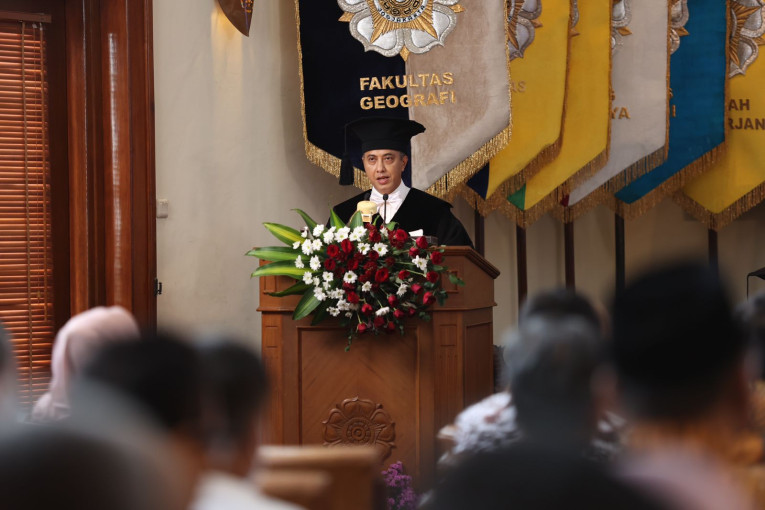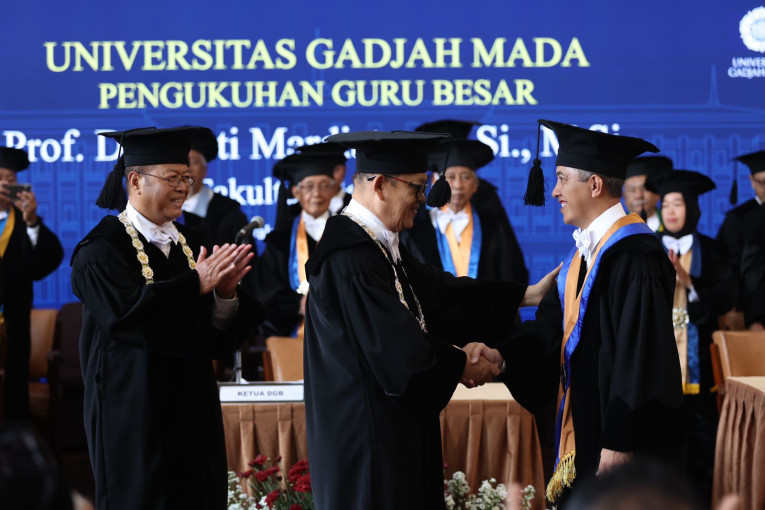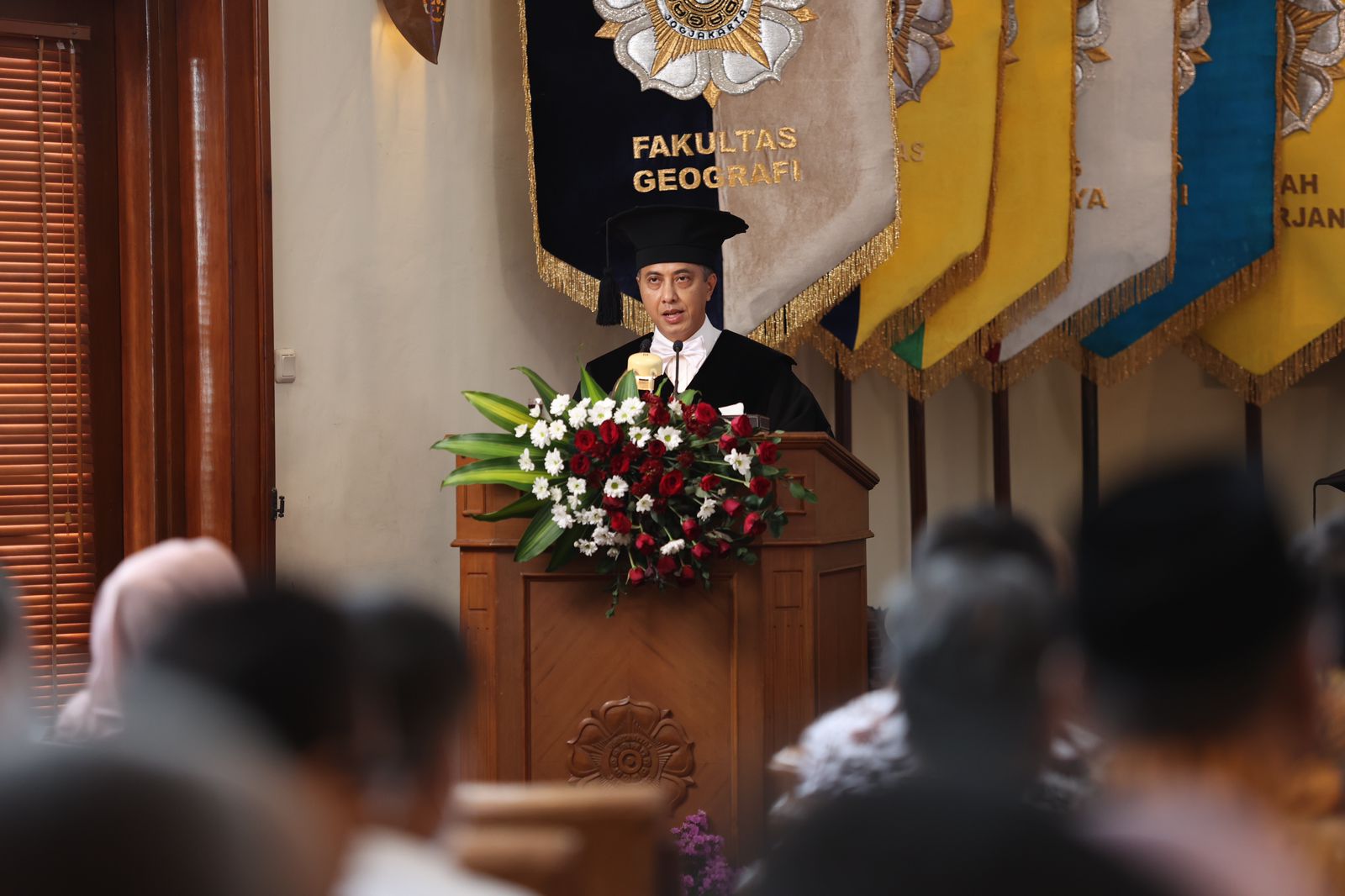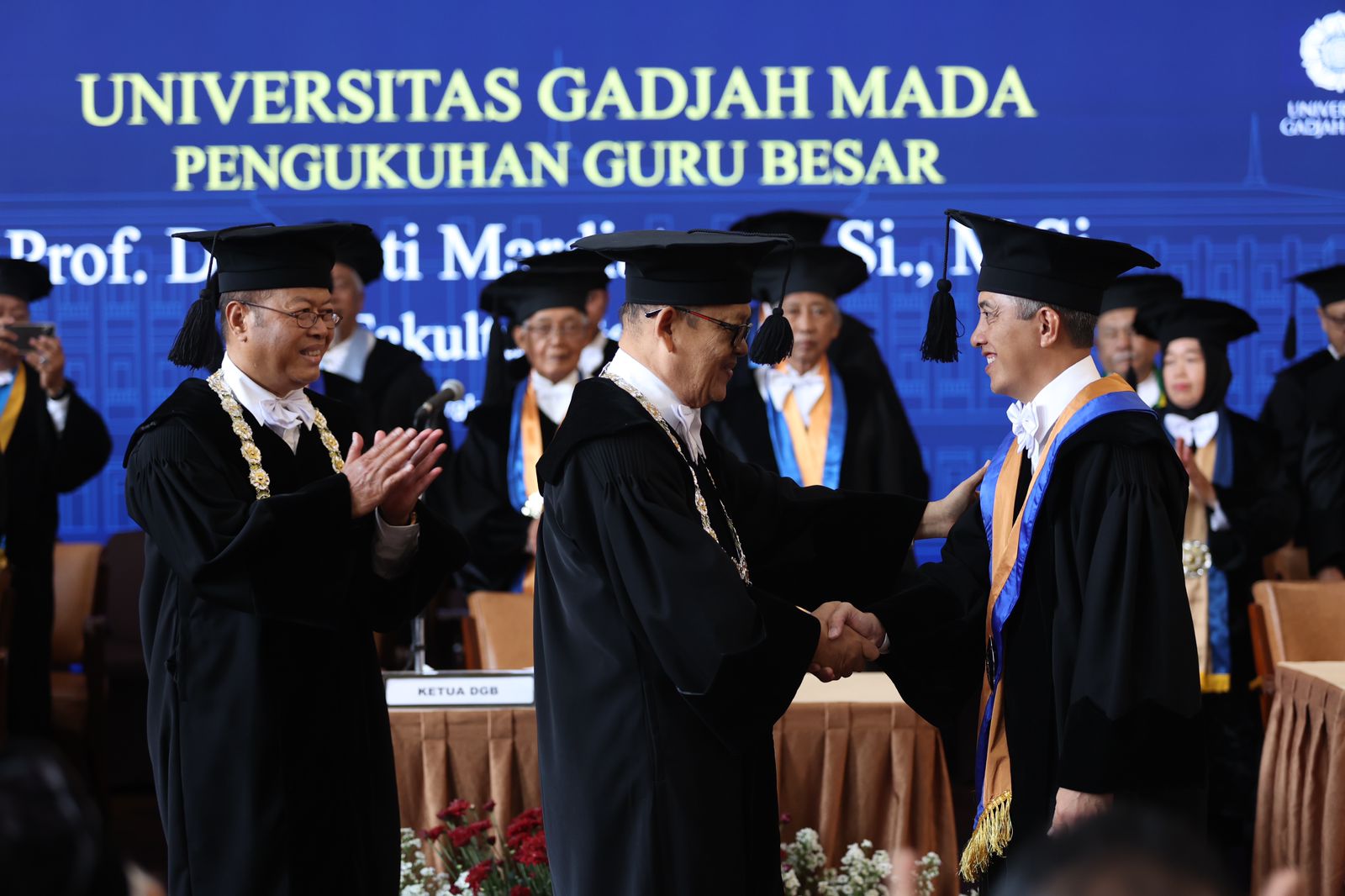Dr. Djati Mardiatno stepped into a new chapter as he was officially inaugurated as a professor in environmental geomorphology at the UGM Faculty of Geography.
The momentous event unfolded on Tuesday (Jan. 2) at the UGM Senate Hall, marking a pinnacle in the academic journey of the former Head of the UGM Center for Disaster Studies (PSBA) during the 2013-2018 tenure.
In his inaugural address titled “Environmental Geomorphology for Ecosystem and Community-Based Disaster Risk Reduction,” Professor Mardiatno delved into disaster literacy, encapsulating facets such as risk comprehension, preparedness and planning, evacuation awareness, and the pivotal role of training and simulation.
“Disaster literacy is vital in fortifying the safety of individuals and communities when confronted with disaster scenarios. Armed with a profound understanding of risks and meticulous preparation, people can shield themselves, their families, and their communities more effectively when disaster strikes,” he expressed.
Forging a link between environmental geomorphology and disaster literacy, Professor Mardiatno underscored the importance of comprehending how earth surface studies and landforms contribute to disaster awareness, preparedness, and response. This symbiotic relationship can materialize through various initiatives, with a keen emphasis on identifying vulnerabilities.
According to him, ecosystems wield a formidable influence in sustainably mitigating disaster risks. Nevertheless, a shortage of comprehensive research consolidating knowledge about ecosystem services and their role in disaster risk reduction exists.
“Using environmental services emerges as a strategic approach to curbing ecosystem-based disaster risk. Coastal areas adorned with lush vegetation exhibit a diminished vulnerability to coastal disasters. The fusion of ecosystem environmental service utilization and community capacity forms a synergistic alliance in the battle against disaster risks,” he expounded.
During the discourse, he introduced the concept of Ecosystem and Community-Based Disaster Risk Reduction (EcoCBDRR), focusing on ecosystem conservation, restoration, and sustainable management as pivotal elements.
Professor Mardiatno stressed that EcoCBDRR aligns seamlessly with geographical studies, rooted in the intricate interplay between humans and the environment, a synergy manifested in disaster risk reduction endeavors.
Highlighting that EcoCBDRR manifested through harmonized ecosystems and community-based actions provides a blueprint for sustaining ecosystems and human life in diverse geomorphological settings with biodiversity and manifold disaster threats.
He contended that the concerted efforts stemming from EcoCBDRR can empower vulnerable regions to grapple with disasters, surmount challenges and foster socio-economic prospects for an equitable future in disaster-prone areas.
“EcoCBDRR must seamlessly integrate into development planning and policies to secure sustainability and enduring safety. A collaborative effort across multiple helix components is imperative to face challenges and seize opportunities to safeguard both people and the environment,” he concluded.
Author: Gloria
Photographer: Firsto





